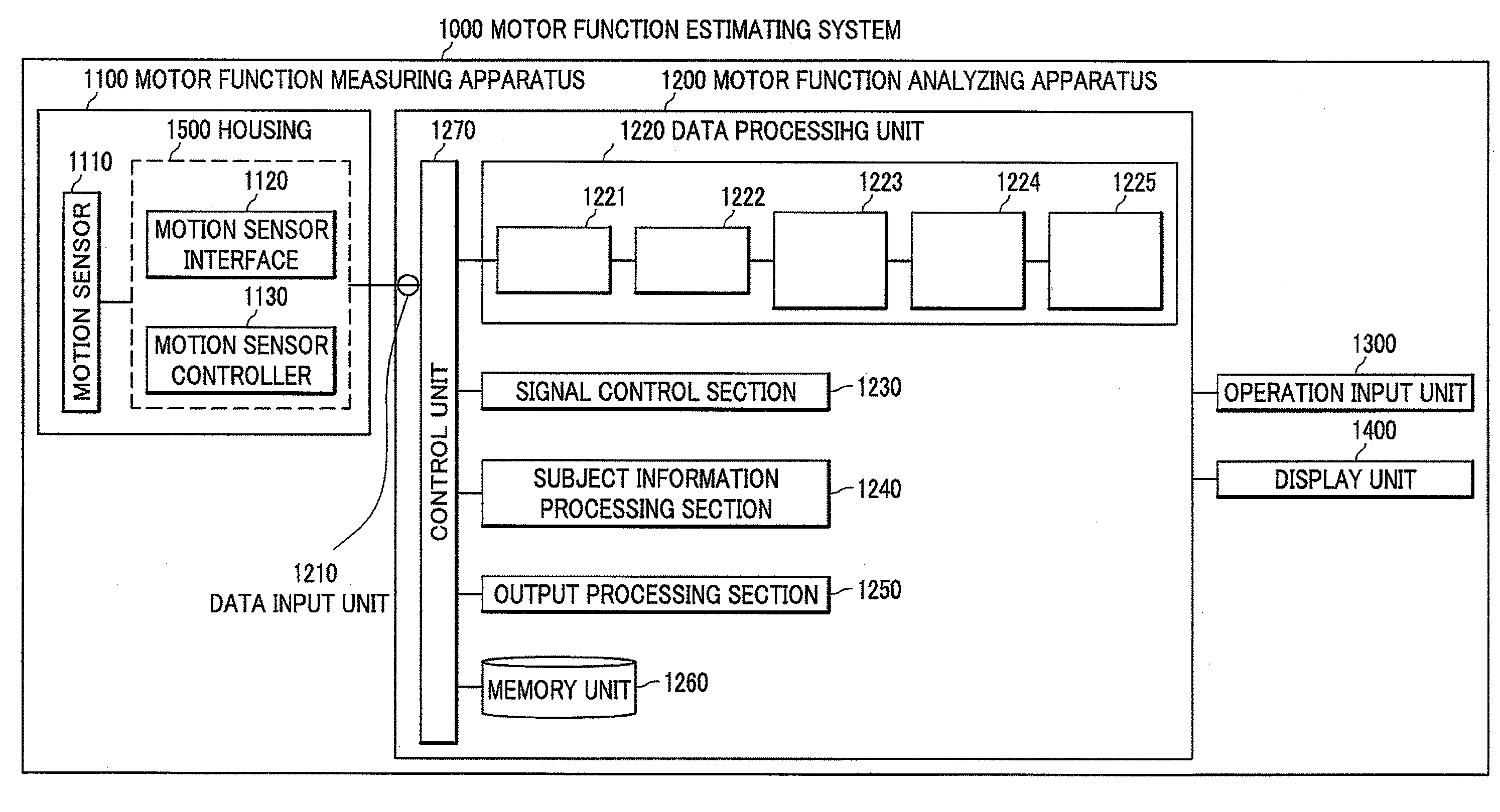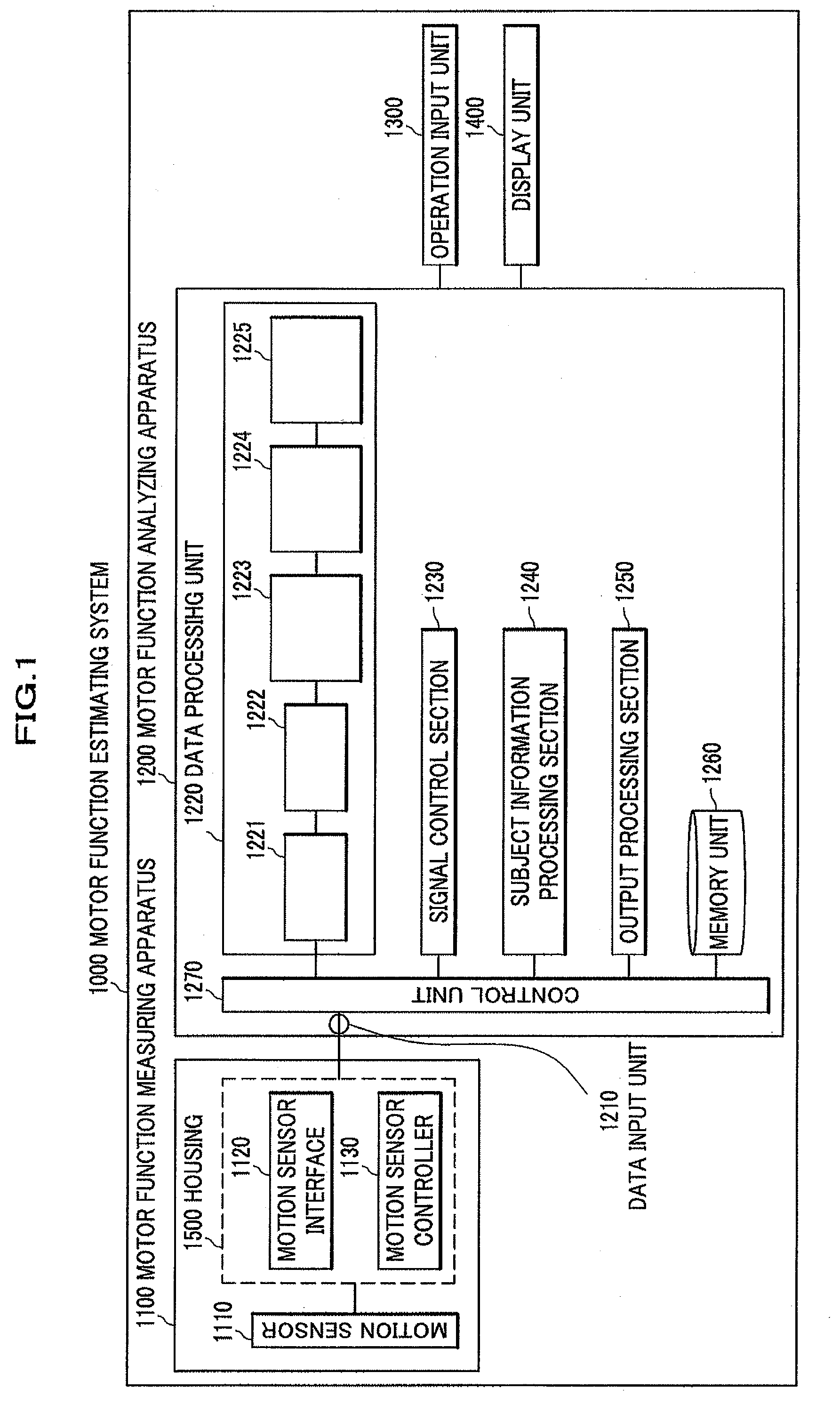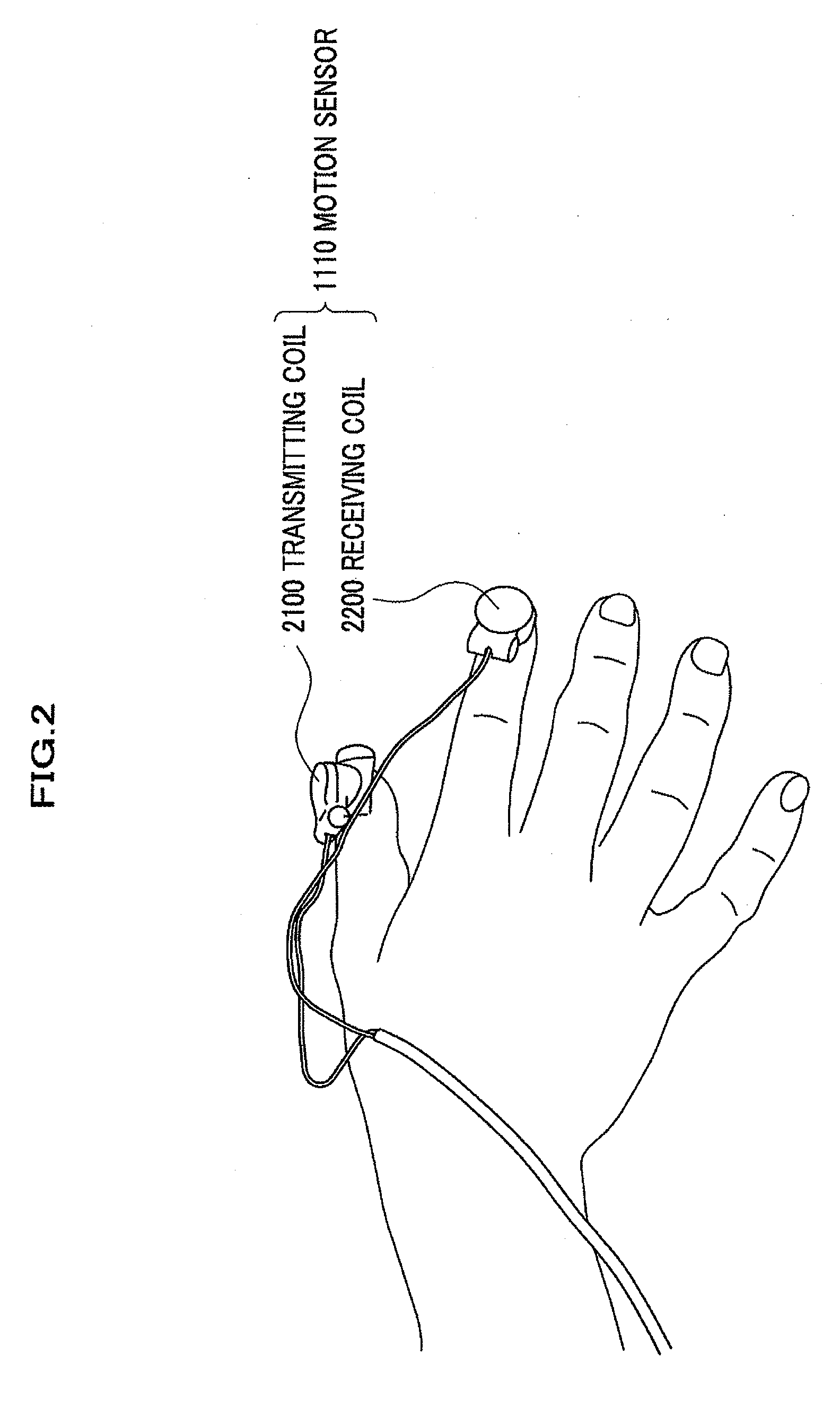Motor function estimating system, motor function estimating method and program
a technology of motor function and estimating method, applied in the field of can solve the problem of difficulty in accurately estimating the disease severity of motion disorder, and achieve the effect of high precision
- Summary
- Abstract
- Description
- Claims
- Application Information
AI Technical Summary
Benefits of technology
Problems solved by technology
Method used
Image
Examples
first embodiment
Total Constitution
[0047]As shown in FIG. 1, the motor function estimating system 1000 comprises a motor function measuring apparatus 1100 for measuring fingers motion of a subject person, a motor function analyzing apparatus 1200 for memorizing and analyzing data measured by the motor function measuring apparatus 1100, an operation input unit 1300 for being used to input the information of the subject person, a display unit 1400 for displaying measurement result and analysis result.
[0048]In this embodiment, the subject person is a measurement object by the motor function measuring apparatus 1100, and is a person who hopes inspection of affection or disease severity about Parkinson's disease. The motor function measuring apparatus 1100 measures the motion of the fingers of the subject person who does fingers tapping motion. The fingers tapping motion is the motion of the subject person repeatedly opening and closing a thumb and a forefinger of a hand as possible fast and large.
[Motor...
second embodiment
[0114]With reference to the drawings will be described a second embodiment of the invention in detail below. In the second embodiment, an application example of this invention to the Parkinson's disease will be described, like the case of the first embodiment. In addition, because FIGS. 1-4, FIGS. 6-15B, FIG. 18, FIG. 19 are similar to the first embodiment, those explanations are omitted.
[0115]For the characteristics generated by the characteristics generating section 1222, contact time in the fingers tapping motion is calculated. The calculation method of this characteristics is described as follows.
[0116]In the second embodiment, contact time (time for which two fingers are in contact), and finger motion time (time for which two fingers move without contact) in the fingers tapping motion by the subject person are calculated. Contact time and finger motion time can be measured directly by a touch sensor. However, in the second embodiment, contact time and finger motion time are cal...
third embodiment
[0120]With reference to the drawings will be described a third embodiment of the invention in detail below. In the third embodiment, an application example of this invention to the Parkinson's disease will be described, like the case of the first embodiment. In addition, because FIG. 1-4, FIG. 6-15B, FIG. 18, FIG. 19 are similar to the first embodiment, those explanation is omitted. In addition, in this embodiment, data of the fingers tapping motion by a subject person ordered to move a finger as possible wide and fast were used. However, the subject person may perform fingers tapping motion by the constant amplitude without opening two fingers in a maximum.
[Calculation Method of the Characteristics]
[0121]The characteristics generating section 1222 (see FIG. 1) calculates similarity of the shape of Lissajous figure shown in FIGS. 24A, 24B for characteristics. When a cross axle is speed of the fingers tapping motion, and a vertical axis is acceleration of the fingers tapping motion, ...
PUM
 Login to View More
Login to View More Abstract
Description
Claims
Application Information
 Login to View More
Login to View More - R&D
- Intellectual Property
- Life Sciences
- Materials
- Tech Scout
- Unparalleled Data Quality
- Higher Quality Content
- 60% Fewer Hallucinations
Browse by: Latest US Patents, China's latest patents, Technical Efficacy Thesaurus, Application Domain, Technology Topic, Popular Technical Reports.
© 2025 PatSnap. All rights reserved.Legal|Privacy policy|Modern Slavery Act Transparency Statement|Sitemap|About US| Contact US: help@patsnap.com



